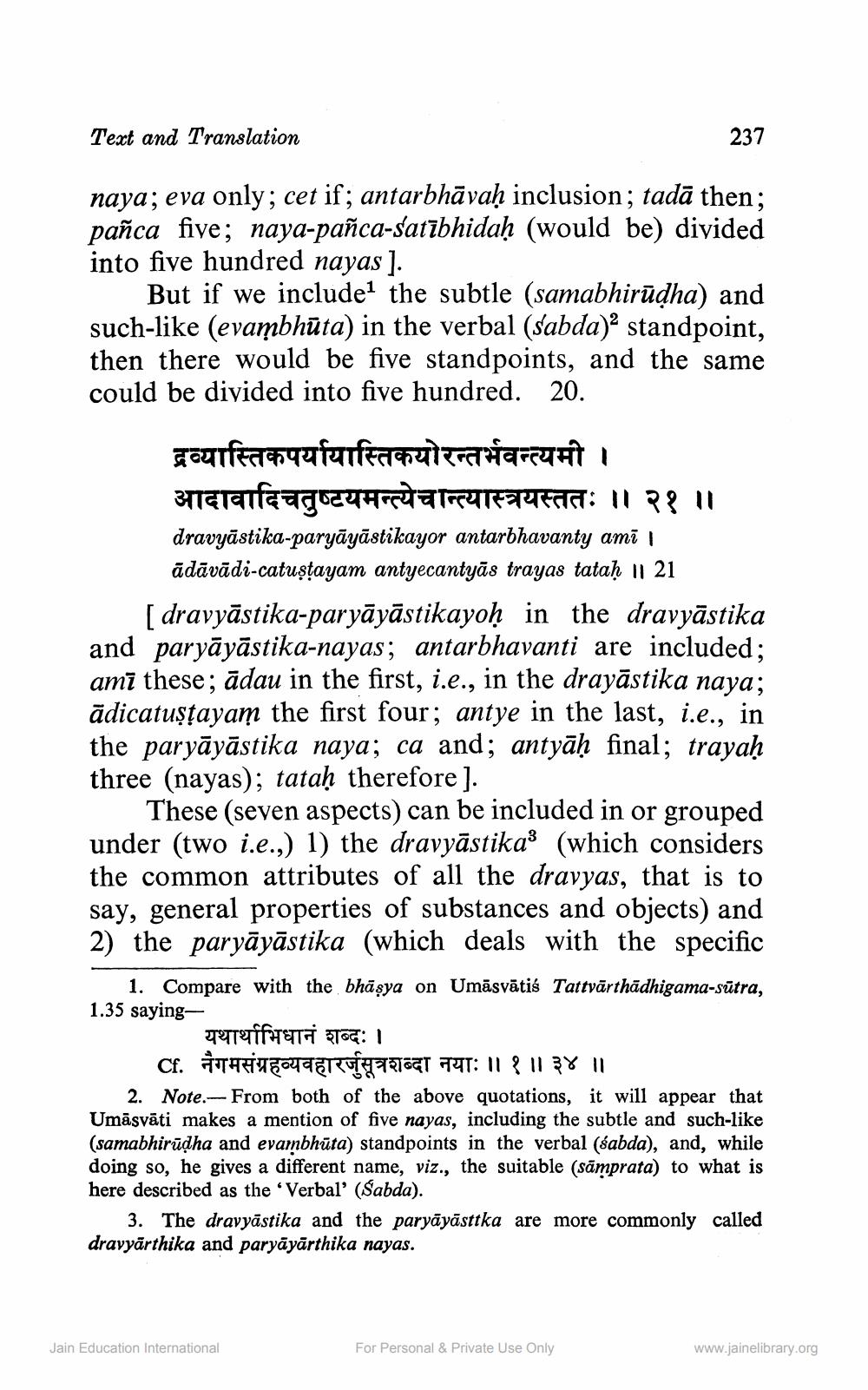________________
Text and Translation
naya; eva only; cet if; antarbhāvaḥ inclusion; tadā then; pañca five; naya-pañca-satībhidaḥ (would be) divided into five hundred nayas ].
But if we include1 the subtle (samabhirūḍha) and such-like (evambhūta) in the verbal (sabda)2 standpoint, then there would be five standpoints, and the same could be divided into five hundred. 20.
द्रव्यास्तिकपर्यायास्तिकयोरन्तर्भवन्त्यमी । आदावादिचतुष्टयमन्त्येचान्त्यास्त्रयस्ततः ॥ २१ ॥
dravyāstika-paryāyāstikayor antarbhavanty ami | ādāvādi-catuṣṭayam antyecantyās trayas tataḥ || 21
237
[dravyāstika-paryāyāstikayoḥ in the dravyāstika and paryāyāstika-nayas; antarbhavanti are included; ami these; ādau in the first, i.e., in the drayāstika naya; adicatuṣṭayam the first four; antye in the last, i.e., in the paryāyāstika naya; ca and; antyāḥ final; trayaḥ three (nayas); tataḥ therefore ].
These (seven aspects) can be included in or grouped under (two i.e.,) 1) the dravyāstika3 (which considers the common attributes of all the dravyas, that is to say, general properties of substances and objects) and 2) the paryāyāstika (which deals with the specific
1. Compare with the bhāṣya on Umāsvātiś Tattvärthādhigama-sūtra, 1.35 saying
यथार्थाभिधानं शब्दः ।
Cf. नैगमसंग्रहव्यवहारर्जुसूत्रशब्दा नयाः ।। १ ।। ३४ ॥
2. Note.- From both of the above quotations, it will appear that Umāsvāti makes a mention of five nayas, including the subtle and such-like (samabhiruḍha and evambhuta) standpoints in the verbal (sabda), and, while doing so, he gives a different name, viz., the suitable (samprata) to what is here described as the 'Verbal' (Sabda).
3. The dravyastika and the paryāyāsttka are more commonly called dravyarthika and paryāyārthika nayas.
Jain Education International
For Personal & Private Use Only
www.jainelibrary.org




